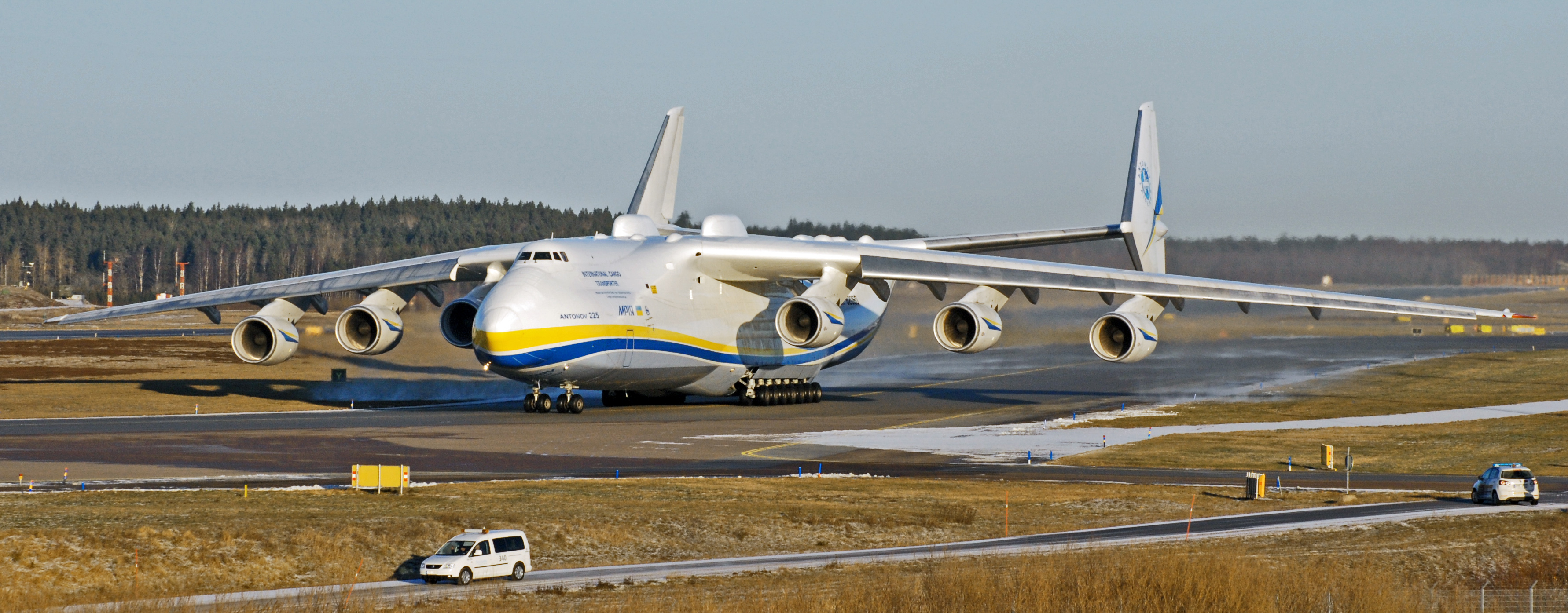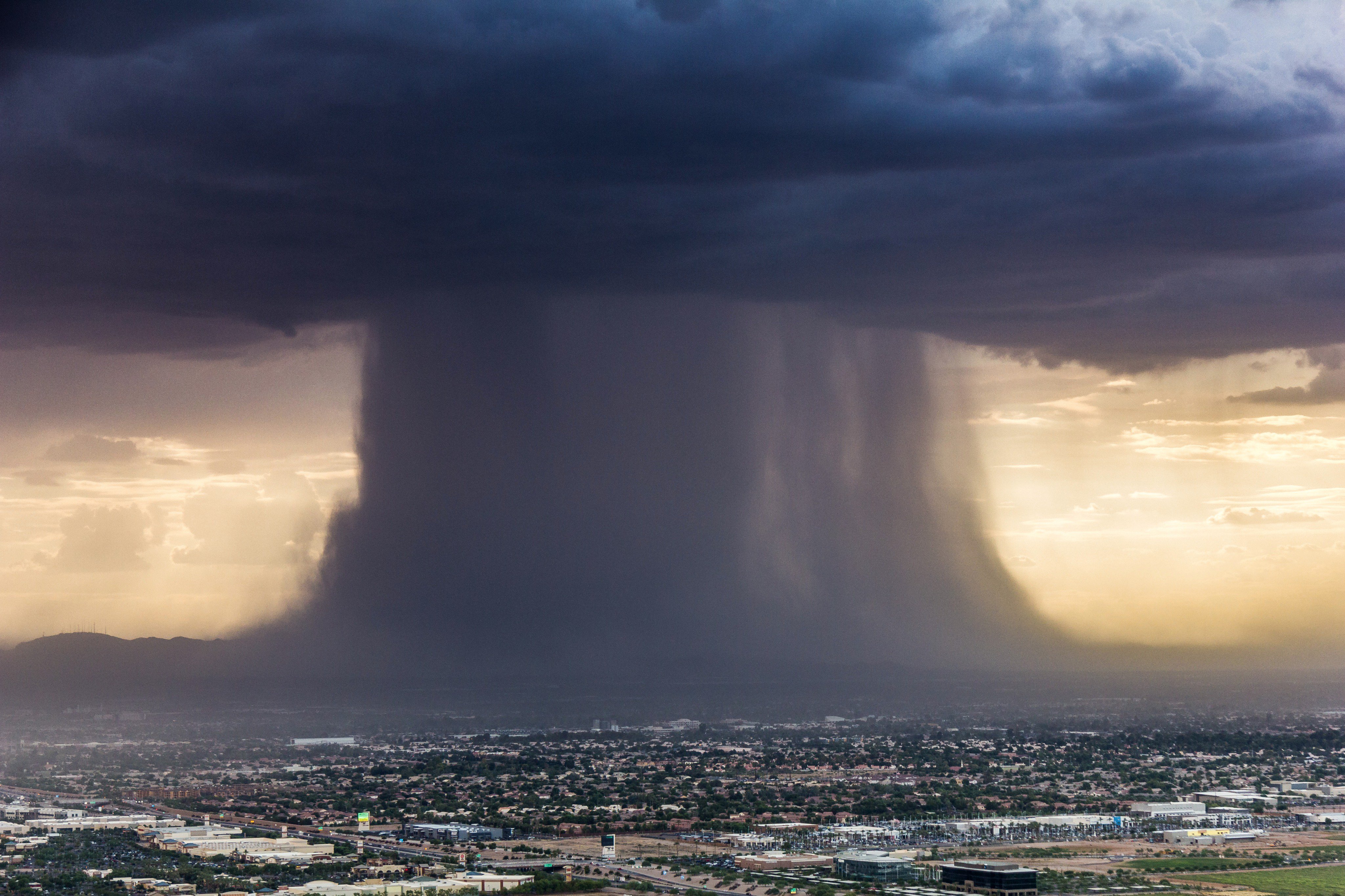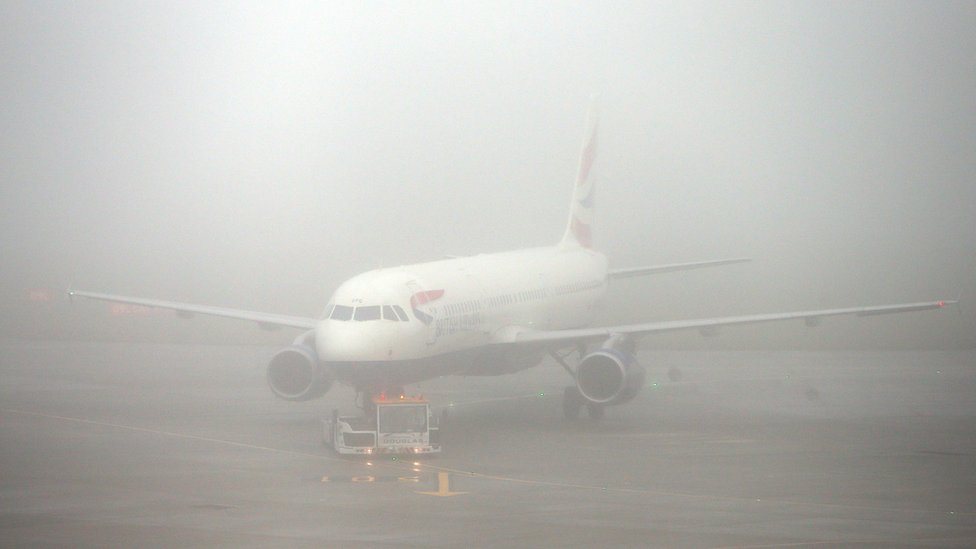There are many different weather hazards in the world of flying, some being more dangerous than others. On this page, I will describe three weather hazards that can impose serious problems on pilots if the correct precautions are not taken. These weather hazards affect all pilots and aircraft, from the small Cessna 172 to the largest plane in the world: Antonov An-225 Mirya.

Thunderstorms
Thunderstorms (cumulonimbus clouds) are made up of cells. In the life cycle of a thunderstorm, there are three stages: The cumulus, mature, and dissipating stage. In the cumulus stage, the thunderstorm is just starting to form. It consists of mainly updrafts which extend from ground level all the way to the top of the cloud level and there is no rain. The mature stage is both updrafts and downdrafts, it also contains rain and is the most dangerous/violent stage in the lifecycle of a thunderstorm. Lastly, the dissipating stage, where the thunderstorm is breaking down and there are only downdrafts and a lot of rain because it is essentially “losing” all of the rain.
The three types of thunderstorms are:
- Basic storms
- Mesoscale convective systems
- Supercells

Hazards to aviation:
Because thunderstorms are convective clouds, meaning they are influenced by warm air rising in the clouds, they carry a lot of hazards with them relating to turbulence. It is very dangerous to fly through or near a thunderstorm because it will create a lot of turbulence for the aircraft. Furthermore, clear air turbulence is when there seems to be an opening in the clouds of the thunderstorm that may look safe to fly through. However, in actuality, there is intense turbulence and that is why it is recommended that pilots stay 20 nautical miles away from any thunderstorm.
Downbursts are associated with the mature and dissipating stages but are very prominent in the latter stage. They can pose severe dangers to pilots as downbursts can be gusts of greater than 20 knots straight to the ground. If an aircraft is caught in a severe downburst, it can commonly end in a crash.
- Hail, Lightning, Tornadoes, Heavy Rain, Ceiling, Visibility
All of these other hazards are also dangerous factors associated with thunderstorms. They can al pose severe problems to pilots and aircraft if not handled properly. Thunderstorms can reduce visibility and lower the ceiling, which is not ideal on a VFR flight where the weather minimums are 3 statute miles of visibility, 1,000 feet above, 500 feet below, and 2,000 feet horizontally in relation to clouds.
Icing

It may be weird to hear that icing can form on the plane when traveling at high speeds through the air. Sometimes general aviation pilots may even rule out the factor of icing when going for a flight. However, icing is severely dangerous when it gets built up on the leading edges of an aircraft, which alters the aerodynamics of the plane. During the winter, when you are on a commercial airliner just before takeoff, you will often see trucks spraying an orange or lime-colored fluid onto the plane, especially the wings. This is called deicing liquid and it helps to prevent ice from forming on the wings while en route.
Icing usually forms on the aircraft when air temperatures are 0ºC to about -40ºC. The liquid water, when it comes into contact with the aircraft will most likely freeze instantaneously. Icing can occur almost at any time when your aircraft comes into contact with liquid water that is in the air when the outside air temperature is between 0ºC and -40ºC which can be from clouds or rain. Even if it seems like a nice day out, icing can still form. Oftentimes, pilots fly through clouds not keeping in mind that ice can form on their wings, propellers, and fuselage, etc. because it might be a warm day outside, but it is quite the opposite in the clouds. In fact, that is a common problem with pilots who encounter icing problems while flying, they forget about the hazards of flying through clouds. However, this doesn’t mean you should completely avoid clouds all together because there are ways to avoid icing. Some of the more modern aircraft are built with anti-icing and de-icing systems. In this case, the anti-icing will prevent ice from forming and the de-icing melts existing ice. This is done through heating in the leading edges of the wings of the aircraft. Specially built leading edges can melt the ice or prevent the formation of new ice.

Hazards to aviation:
- Icing on the wings of the aircraft
Icing on the wings of the aircraft is especially dangerous because the ice will build up on the aircraft creating more drag which will slow the aircraft down. But perhaps more important is that it will disturb the airflow of the wing which could cause the airplane to stall.
Icing on the propellers will decrease the functional capacity of the propellers, thus reducing the power and thrust it exerts.
- Icing on air intake filters
This is particularly dangerous because if ice forms on air intake filters then it will directly hinder the powerplant of the aircraft. In the case that ice completely covers the air intake filter, the engine will essentially be broken because the engine will no longer have any more air to function.
- Icing on control surfaces
Icing on control surfaces leads to many crashes in aviation. When ice forms on the ailerons, elevators, trim, and rudders it is extremely dangerous as the pilot will no longer be able to control the aircraft. The ice will limit the movement of the aircraft which can end up being very deadly.
Fog

Fog can be one of the most dangerous types of weather when flying. In simple terms, it’s a cloud that touches the ground. It severely reduces visibility and makes it more difficult to navigate, land, and fly safely. Sometimes pilots lose their senses and can get spatial disorientation because they have no sense of direction when everything looks the same. So relying on the instruments in the aircraft is a must when flying in fog because it is basically like flying in a cloud for however long the fog remains. Flying in fog is effectively impossible for those who want to pursue a VFR flight as one of the weather minimums is 3 statute miles of visibility. However, fog brings very poor visibility, which is usually less than 1 km (⅝ miles). Furthermore, your aircraft is also susceptible to icing when flying through fog and as mentioned above icing on an aircraft is seriously dangerous.

Types of Fog:
- Radiation
- Advection
- Upslope
- Precipitation/frontal
- Steam
When there is fog in the area there is not much that you can do. If the fog is super thick and the visibility is even less than 0.5 statute miles, it is possible to not be able to fly even if your aircraft is instrument rating and the pilot is properly trained for IFR as there needs to be a certain amount of visibility during takeoffs and landings. Sometimes, when coming in for landings in heavy fog pilots use autopilot to bring them down to a couple of hundred feet above the ground because the fog is so bad. They use an approach called ILS (Instrument Landing System) which guides the aircraft right onto the touchdown markers of the runway. However, like stated above, if the fog is so thick (<0.5 miles) and the pilots can’t see the runway at the minimum/decision altitude they must execute a go-around and either wait for the fog to dissipate from heating or lifting or go to the alternate airport.
 icons at the top right corner of the subsection.
icons at the top right corner of the subsection.